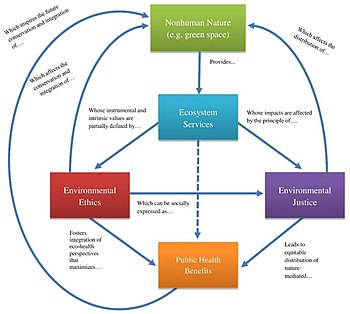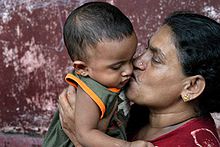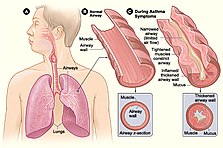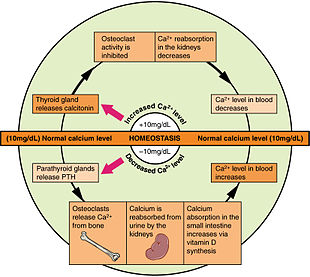We're for all- ALL are for us for the greater interest of Humanism-Truth-Facts-Friendship-Unity-Participation including Physico-Mental Sound Health with Spirituality enrichment through ''TOTAL HEALTH SOLUTION'' to a Well-furnished GOALofTruth alloted for all in real sense ;
From wikipedia & other reliable sources ( Poets, Writers, Thinkers, Researchers, Free Lancers, Philosophers, Theologists, Scientists, Orators, Sociologists and Photographers +Artists-Musicians & etc.) we can learn as follows :

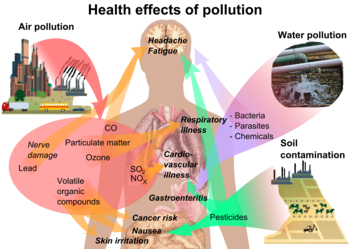
""Love encompasses a range of strong and positive emotional and mental states, from the most sublime virtue or good habit, the deepest interpersonal affection, to the simplest pleasure.[1][2] An example of this range of meanings is that the love of a mother differs from the love of a spouse, which differs from the love for food. Most commonly, love refers to a feeling of a strong attraction and emotional attachment.[3][4][5]
Love is considered to be both positive and negative, with its virtue representing human kindness, compassion, and affection, as "the unselfish loyal and benevolent concern for the good of another" and its vice representing human moral flaw, akin to vanity, selfishness, amour-propre, and egotism, as potentially leading people into a type of mania, obsessiveness or codependency.[6][7] It may also describe compassionate and affectionate actions towards other humans, one's self, or animals.[8] In its various forms, love acts as a major facilitator of interpersonal relationships and, owing to its central psychological importance, is one of the most common themes in the creative arts.[9] Love has been postulated to be a function that keeps human beings together against menaces and to facilitate the continuation of the species.[10]
Ancient Greek philosophers identified six forms of love: essentially, familial love (in Greek, Storge), friendly love or platonic love (Philia), romantic love (Eros), self-love (Philautia), guest love (Xenia), and divine love (Agape). Modern authors have distinguished further varieties of love: unrequited love, empty love, companionate love, consummate love, infatuated love, self-love, and courtly love. Numerous cultures have also distinguished Ren, Yuanfen, Mamihlapinatapai, Cafuné, Kama, Bhakti, Mettā, Ishq, Chesed, Amore, Charity, Saudade (and other variants or symbioses of these states), as culturally unique words, definitions, or expressions of love in regards to a specified "moments" currently lacking in the English language.[11][12][13]
Scientific research on emotion has increased significantly over the past two decades. The color wheel theory of love defines three primary, three secondary and nine tertiary love styles, describing them in terms of the traditional color wheel. The triangular theory of love suggests "intimacy, passion and commitment" are core components of love. Love has additional religious or spiritual meaning. This diversity of uses and meanings combined with the complexity of the feelings involved makes love unusually difficult to consistently define, compared to other emotional states.
The word "love" can have a variety of related but distinct meanings in different contexts. Many other languages use multiple words to express some of the different concepts that in English are denoted as "love"; one example is the plurality of Greek concepts for "love" (agape, eros, philia, storge) .[14] Cultural differences in conceptualizing love thus doubly impede the establishment of a universal definition.[15]
Although the nature or essence of love is a subject of frequent debate, different aspects of the word can be clarified by determining what isn't love (antonyms of "love"). Love as a general expression of positive sentiment (a stronger form of like) is commonly contrasted with hate (or neutral apathy). As a less-sexual and more-emotionally intimate form of romantic attachment, love is commonly contrasted with lust. As an interpersonal relationship with romantic overtones, love is sometimes contrasted with friendship, although the word love is often applied to close friendships or platonic love. (Further possible ambiguities come with usages "girlfriend", "boyfriend", "just good friends").
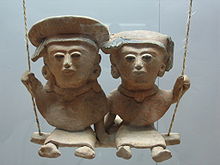
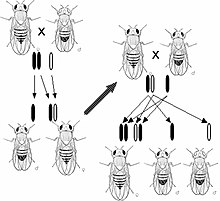
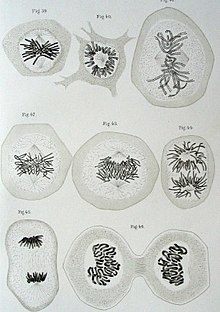
Abstractly discussed, love usually refers to an experience one person feels for another. Love often involves caring for, or identifying with, a person or thing (cf. vulnerability and care theory of love), including oneself (cf. narcissism). In addition to cross-cultural differences in understanding love, ideas about love have also changed greatly over time. Some historians date modern conceptions of romantic love to courtly Europe during or after the Middle Ages, although the prior existence of romantic attachments is attested by ancient love poetry.[16]
The complex and abstract nature of love often reduces discourse of love to a thought-terminating cliché. Several common proverbs regard love, from Virgil's "Love conquers all" to The Beatles' "All You Need Is Love". St. Thomas Aquinas, following Aristotle, defines love as "to will the good of another."[17] Bertrand Russell describes love as a condition of "absolute value," as opposed to relative value.[citation needed] Philosopher Gottfried Leibniz said that love is "to be delighted by the happiness of another."[18] Meher Baba stated that in love there is a "feeling of unity" and an "active appreciation of the intrinsic worth of the object of love."[19] Biologist Jeremy Griffith defines love as "unconditional selflessness".[20]
Impersonal
People can be said to love an object, principle, or goal to which they are deeply committed and greatly value. For example, compassionate outreach and volunteer workers' "love" of their cause may sometimes be born not of interpersonal love but impersonal love, altruism, and strong spiritual or political convictions.[21] People can also "love" material objects, animals, or activities if they invest themselves in bonding or otherwise identifying with those things. If sexual passion is also involved, then this feeling is called paraphilia.[22]
Interpersonal love refers to love between human beings. It is a much more potent sentiment than a simple liking for a person. Unrequited love refers to those feelings of love that are not reciprocated. Interpersonal love is most closely associated with Interpersonal relationships.[21] Such love might exist between family members, friends, and couples. There are also a number of psychological disorders related to love, such as erotomania. Throughout history, philosophy and religion have done the most speculation on the phenomenon of love. In the 20th century, the science of psychology has written a great deal on the subject. In recent years, the sciences of psychology, anthropology, neuroscience, and biology have added to the understanding of the concept of love.
Biological basis
Biological models of sex tend to view love as a mammalian drive, much like hunger or thirst.[23] Helen Fisher, an anthropologist and human behavior researcher, divides the experience of love into three partly overlapping stages: lust, attraction, and attachment. Lust is the feeling of sexual desire; romantic attraction determines what partners mates find attractive and pursue, conserving time and energy by choosing; and attachment involves sharing a home, parental duties, mutual defense, and in humans involves feelings of safety and security.[24] Three distinct neural circuitries, including neurotransmitters, and three behavioral patterns, are associated with these three romantic styles.[24]
Lust is the initial passionate sexual desire that promotes mating, and involves the increased release of chemicals such as testosterone and estrogen. These effects rarely last more than a few weeks or months. Attraction is the more individualized and romantic desire for a specific candidate for mating, which develops out of lust as commitment to an individual mate forms. Recent studies in neuroscience have indicated that as people fall in love, the brain consistently releases a certain set of chemicals, including the neurotransmitter hormones, dopamine, norepinephrine, and serotonin, the same compounds released by amphetamine, stimulating the brain's pleasure center and leading to side effects such as increased heart rate, loss of appetite and sleep, and an intense feeling of excitement. Research has indicated that this stage generally lasts from one and a half to three years.[25]
Since the lust and attraction stages are both considered temporary, a third stage is needed to account for long-term relationships. Attachment is the bonding that promotes relationships lasting for many years and even decades. Attachment is generally based on commitments such as marriage and children, or mutual friendship based on things like shared interests. It has been linked to higher levels of the chemicals oxytocin and vasopressin to a greater degree than short-term relationships have.[25] Enzo Emanuele and coworkers reported the protein molecule known as the nerve growth factor (NGF) has high levels when people first fall in love, but these return to previous levels after one year.[26]
Psychological basis
Psychology depicts love as a cognitive and social phenomenon. Psychologist Robert Sternberg formulated a triangular theory of love and argued that love has three different components: intimacy, commitment, and passion. Intimacy is a form in which two people share confidences and various details of their personal lives, and is usually shown in friendships and romantic love affairs. Commitment, on the other hand, is the expectation that the relationship is permanent. The last form of love is sexual attraction and passion. Passionate love is shown in infatuation as well as romantic love. All forms of love are viewed as varying combinations of these three components. Non-love does not include any of these components. Liking only includes intimacy. Infatuated love only includes passion. Empty love only includes commitment. Romantic love includes both intimacy and passion. Companionate love includes intimacy and commitment. Fatuous love includes passion and commitment. Lastly, consummate love includes all three components.[27] American psychologist Zick Rubin sought to define love by psychometrics in the 1970s. His work states that three factors constitute love: attachment, caring, and intimacy.[28][29]
Following developments in electrical theories such as Coulomb's law, which showed that positive and negative charges attract, analogs in human life were developed, such as "opposites attract". Over the last century, research on the nature of human mating has generally found this not to be true when it comes to character and personality—people tend to like people similar to themselves. However, in a few unusual and specific domains, such as immune systems, it seems that humans prefer others who are unlike themselves (e.g., with an orthogonal immune system), since this will lead to a baby that has the best of both worlds.[30] In recent years, various human bonding theories have been developed, described in terms of attachments, ties, bonds, and affinities. Some Western authorities disaggregate into two main components, the altruistic and the narcissistic. This view is represented in the works of Scott Peck, whose work in the field of applied psychology explored the definitions of love and evil. Peck maintains that love is a combination of the "concern for the spiritual growth of another," and simple narcissism.[31] In combination, love is an activity, not simply a feeling.
Psychologist Erich Fromm maintained in his book The Art of Loving that love is not merely a feeling but is also actions, and that in fact, the "feeling" of love is superficial in comparison to one's commitment to love via a series of loving actions over time.[21] In this sense, Fromm held that love is ultimately not a feeling at all, but rather is a commitment to, and adherence to, loving actions towards another, oneself, or many others, over a sustained duration.[21] Fromm also described love as a conscious choice that in its early stages might originate as an involuntary feeling, but which then later no longer depends on those feelings, but rather depends only on conscious commitment.[21]
Evolutionary basis
Adaptive benefit
Interpersonal love between a male and a female is considered to provide an evolutionary adaptive benefit since it facilitates mating and sexual reproduction.[34] However, some organisms can reproduce asexually without mating. Thus understanding the adaptive benefit of interpersonal love depends on understanding the adaptive benefit of sexual reproduction as opposed to asexual reproduction. Michod[34] has reviewed evidence that love, and consequently sexual reproduction, provides two major adaptive advantages. First, love leading to sexual reproduction facilitates repair of damages in the DNA that is passed from parent to progeny (during meiosis, a key stage of the sexual process). Second, a gene in either parent may contain a harmful mutation, but in the progeny produced by sex reproduction, expression of a harmful mutation introduced by one parent is likely to be masked by expression of the unaffected homologous gene from the other parent.[34]
Comparison of scientific models
Biological models of love tend to see it as a mammalian drive, similar to hunger or thirst.[23] Psychology sees love as more of a social and cultural phenomenon. Certainly, love is influenced by hormones (such as oxytocin), neurotrophins (such as NGF), and pheromones, and how people think and behave in love is influenced by their conceptions of love. The conventional view in biology is that there are two major drives in love: sexual attraction and attachment. Attachment between adults is presumed to work on the same principles that lead an infant to become attached to its mother. The traditional psychological view sees love as being a combination of companionate love and passionate love. Passionate love is intense longing, and is often accompanied by physiological arousal (shortness of breath, rapid heart rate); companionate love is affection and a feeling of intimacy not accompanied by physiological arousal ".
We're for all- ALL are for us for the greater interest of Humanism-Truth-Facts-Friendship-Unity-Participation to a Well-furnished GOAL of Truth from which all shall have ++++;
We're indebted to WIKIPEDIA +WHO for a short while and as 'Guardian QUOTATION' from Global WISER ONE. And have quoted many images, article's, writings etc. by great & humanist writers+++ from global thinkers, Well-wishers, Wiseman, Humanists and Others Living-Nonlivings in favor of HUMANISM to share more answers of Researchers-readers+++++....
To reach the 'GOAL of FULFILNESS' unitedly to alive in the "DESTINATION of TRUTH-FACTS-CHARMEST AMICABLITY" of Natural Joyful POSSIBILITIES+++
BREAST CANCER, TUMOR, Arsenic+Chemical Poisoning, Corona, Heart-Lung diseases, Neurological-Hormonal-Immunal-Infectious diseases with related complexities are possible to cure properly-easily-scientifically-accurately (100%) by our positive medical services only with+++++balance confirming
Medicine-Food control-proper nursing-medicinal massage-Medicinal Yogas- Meditation, Physiotherapy special etc. without side effects & Repeatation as per contract through user-friendly approved ways of CURE++++. please fill our form as below or click:
After confirming contract-letter between you+++. We serve you properly with no Chemo-therapy-radiation therapy -SURGICAL Complexities (Physical-Mental) to CURE+++ upto our Limit to recover your both-health from illness.



